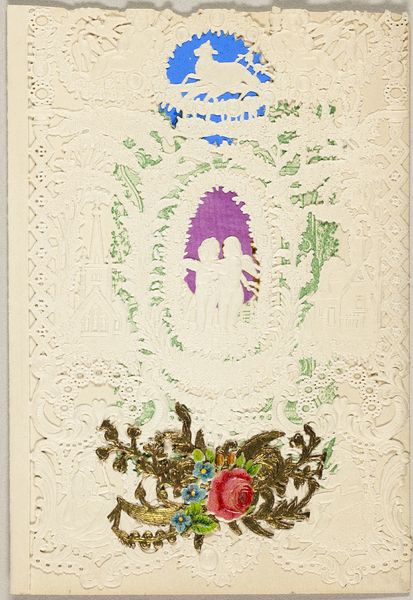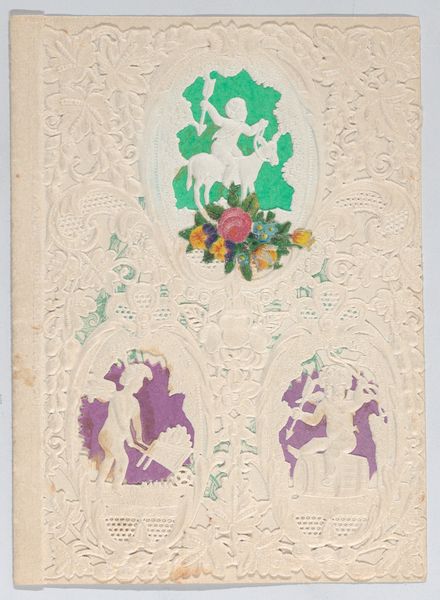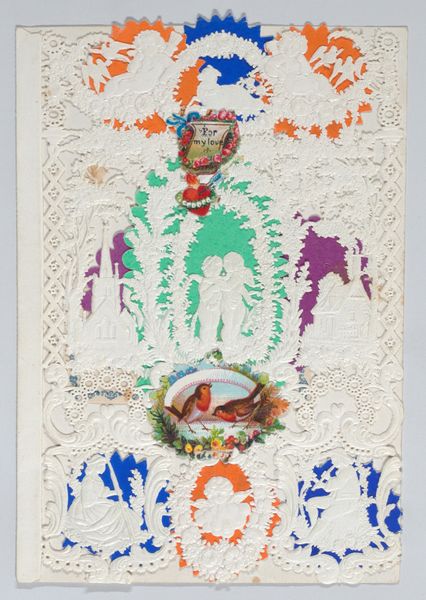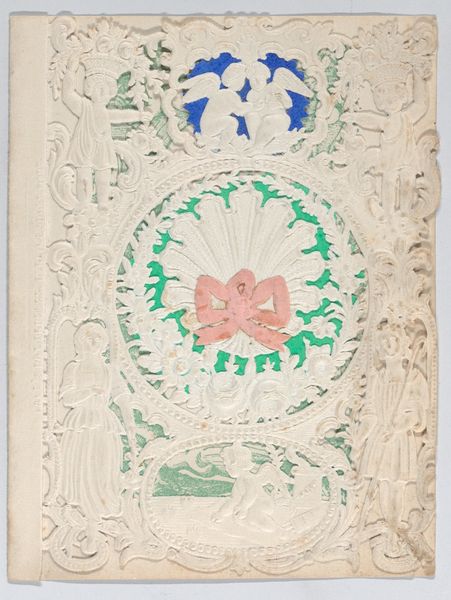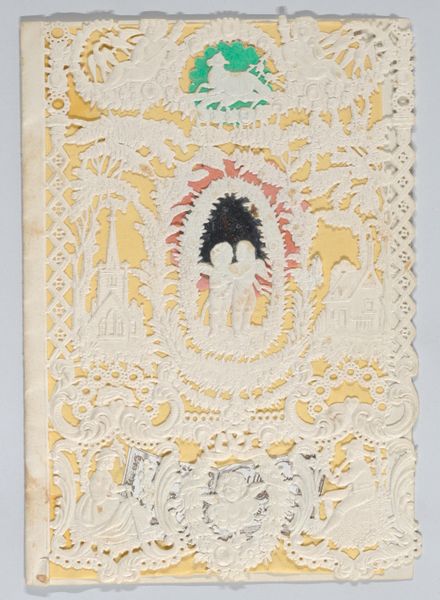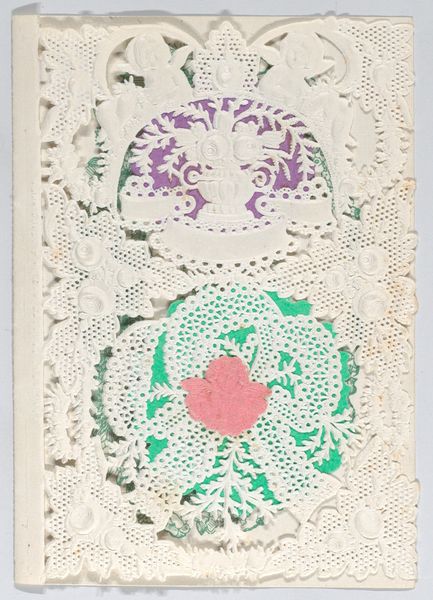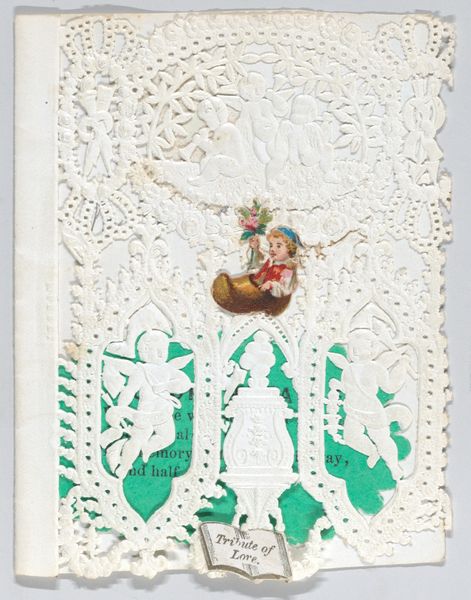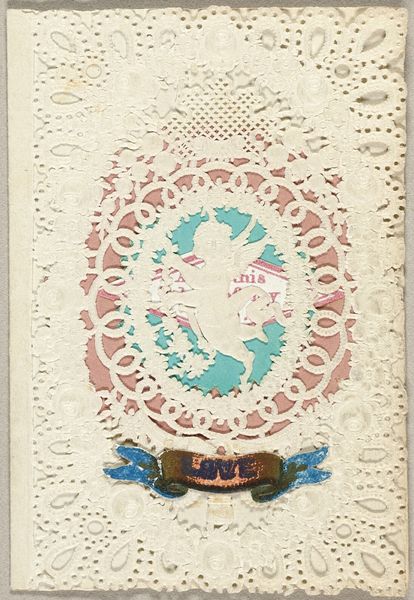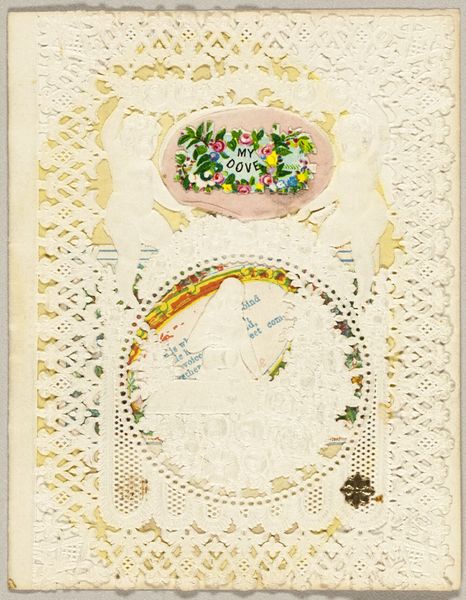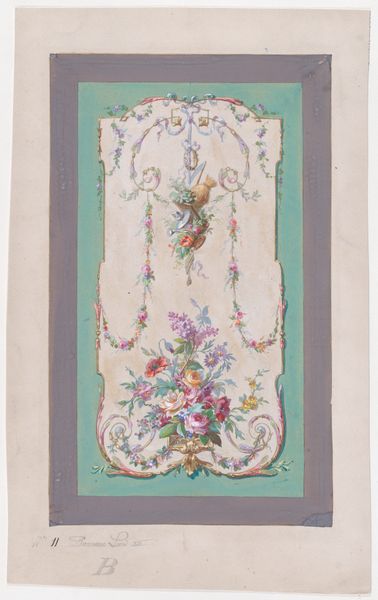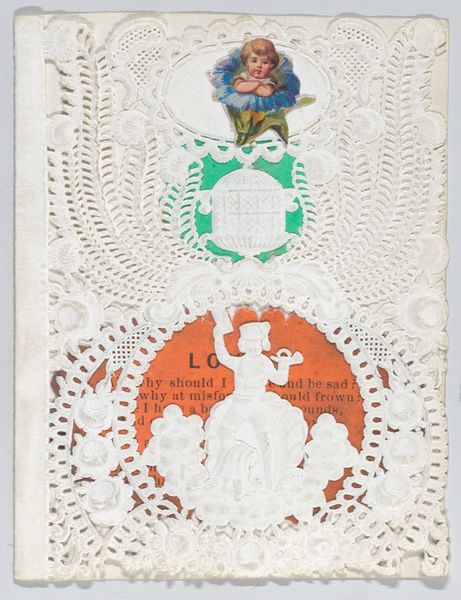
drawing, print, relief-print, paper
#
drawing
#
water colours
# print
#
relief-print
#
figuration
#
paper
#
linocut print
#
intimism
#
folk-art
#
romanticism
#
line
#
decorative-art
#
miniature
Dimensions: Width: 4 5/8 in. (11.8 cm) Length: 7 3/8 in. (18.7 cm)
Copyright: Public Domain
Curator: Isn't it lovely? This is an anonymous piece titled "Valentine," created sometime between 1825 and 1875. It's a drawing made with relief-print techniques and watercolor on paper and is now part of the Metropolitan Museum of Art's collection. Editor: My first thought? Intricate, almost impossibly so. Like a frozen lace doily concealing hidden stories. I immediately think about craft, patience and… the immense weight of Victorian expectations around love. Curator: Absolutely. The labor involved speaks volumes. Each tiny cut, each delicate line points towards an almost devotional act. The decorative-art and folk-art aspects merge into something that is very intimate. It’s an anonymous declaration. Who was the recipient, and what were the societal norms around such displays? Editor: Precisely. The two figures at the heart of it all, bathed in the reflected glow of what I'm seeing as perhaps an artificial construct – a fantasy. The framing oval feels restrictive, even if it’s softened by floral patterns. Curator: But perhaps there's a protective element to the frame as well? Think of it as a miniature world, shielding this burgeoning, nascent affection from the prying eyes of society. It embodies elements of romanticism, that is trying to seek solace in nature to counter social constraints. It’s the classic Romantic era desire to create a space just for yourself and your beloved. Editor: That's a generous reading! But I still feel the undeniable pressure of performative affection in it. Look at the precise symmetries, the careful balancing of elements. Is it heartfelt or manufactured? It dances on that uneasy edge, doesn't it? Also, who had access to these materials, and could craft something so complex? Curator: A very astute observation! Perhaps the valentine is not about the pure and idealized emotions but the attempt to reach that ideal. It also opens doors to broader intersectional narratives in history that involve love and loss. A bittersweet truth that has much to teach us even now. Editor: Ultimately, a fascinating piece precisely because it doesn’t offer easy answers. A material whisper from the past that challenges us to reflect on our own complex relationships with love, performance and societal expectations. Curator: Yes. And how remarkable that a tiny, fragile piece of paper can hold so much. It certainly invites reflection on our expectations of art and love.
Comments
No comments
Be the first to comment and join the conversation on the ultimate creative platform.
